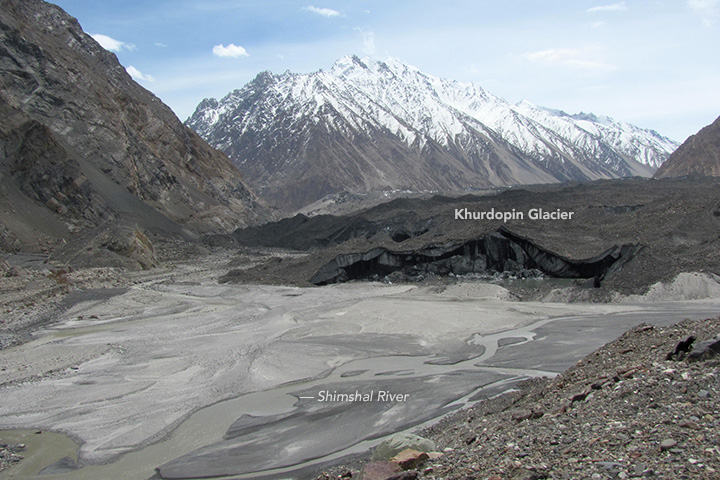Khurdopin glacier & Shimshal River
Khurdopin has surged most recently. After years of little movement, the glacier began a rapid advance in October 2016, accelerating to a rate of roughly 20 meters (65 feet) per day by the spring of 2017—one of the fastest rates observed for a glacier in this region. As ice and sediment pushed into the river, a sizable lake pooled up in March 2017. Jakob Steiner of Utrecht University and the Mountain Hydrology Group has been monitoring the growth of the lake using imagery collected by Landsat 8 and Planet Labs, a commercial satellite company.
By July 2017, the river had carved an outlet through the glacial debris before the lake could grow extremely large, but Steiner’s group continued to keep a watchful eye on this area because of how much debris the glacier pushed into the river. The surge increased the thickness of the end of the glacier by as much as 80 meters (260 feet), according to Steiner. The photograph above, taken by Waheed Anwar of Focus Pakistan, shows the tip of the sediment-coated glacier pushing into the river on May 15, 2017. The camera is pointed upstream toward Khurdopin glacier.| Denna fil är allmän egendom eftersom den skapades av NASA. NASA:s upphovsrättspolicy hävdar att "material från NASA inte är upphovsrättsskyddad om inte annat anges". (Se Template:PD-USGov, NASA:s upphovsrättspolicy eller JPL-bildanvändningspolicy.) |  | |
 |
Varningar:
|
Mer information om licensen för bilden finns här. Senaste uppdateringen: Wed, 21 Dec 2022 15:42:41 GMT
